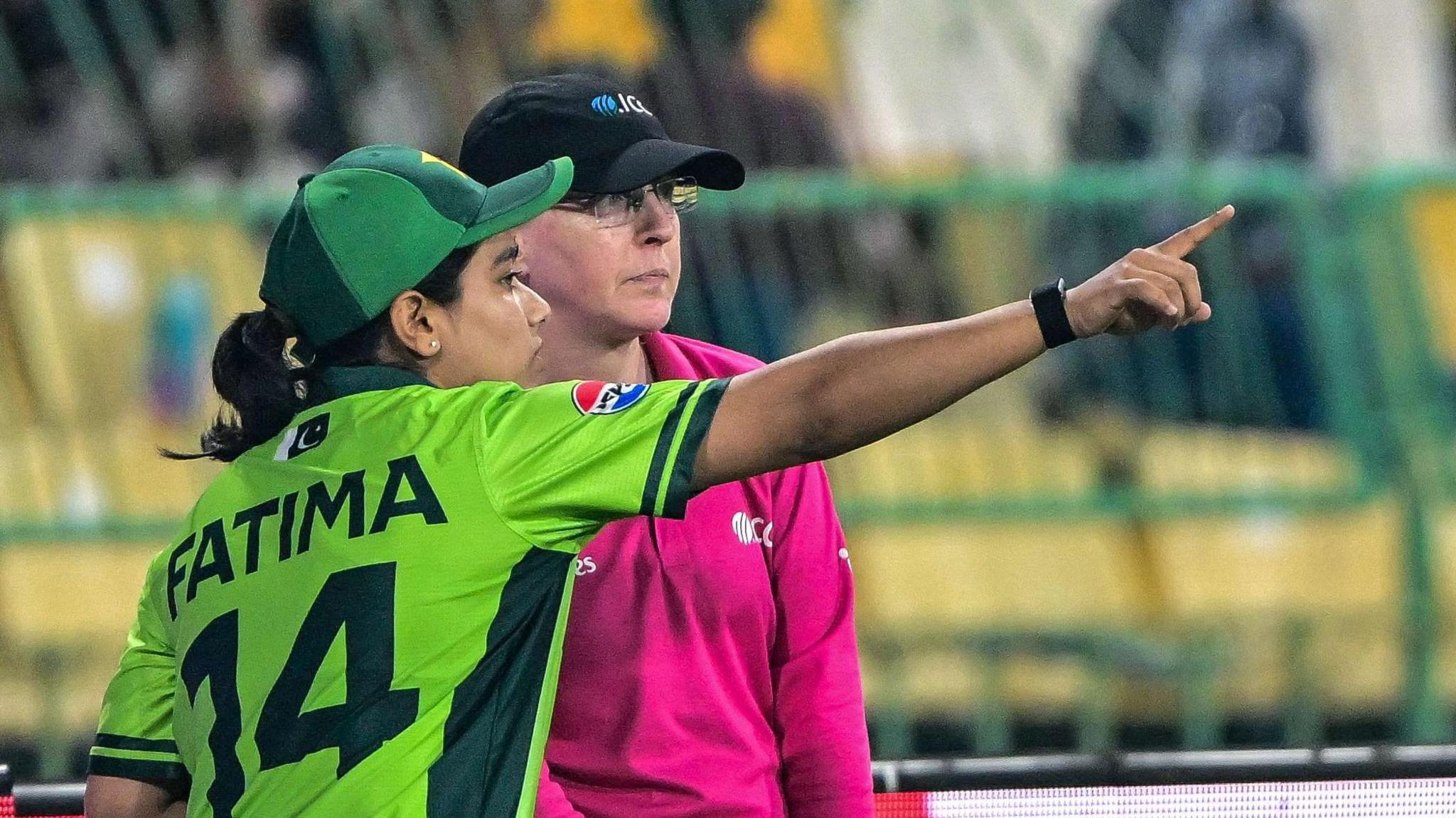JavaScript must be enabled in your browser to play this video.
In their decision to rule out Muneeba Ali after Pakistan’s defeat by India at the Women’s World Cup on Sunday, cricket’s lawmakers have explained why the umpires ultimately made the right decision.
After opening pitcher Muneeba was let out by the TV umpire as a throw hit the stumps, Pakistan’s captain Fatima Sana protested.
The Marylebone Cricket Club claims that law is only applicable when a batter is “running or diving,” even though some have cited law 30.1.2 and claimed Muneeba should have been excused for throwing her bat earlier.
The MCC continued, “This law, which was introduced in 2010 and is sometimes referred to as the “bouncing bat law,” is intended to protect a batter who unintentionally loses contact with the ground as they approach the stumps, either with their bat bouncing up or just with both of their feet being airborne as a result of their natural running.
It does not safeguard a batter who is turning for another run, overbalancing, or who simply lifts their bat into the air, as in Muneeba’s case.
What transpired in the case of Muneeba?
In Colombo, Pakistan’s pursuit of 248 reached its fourth over.
Kranti Goud’s ball struck Muneeba on the pad, and as the majority of the India players pleaded for lbw, the left-hander turned and tapped her bat into the crease.
The big screen later displayed the TV umpire’s not-out decision.
However, further replays revealed that Muneeba had lifted her bat in the air when Deepti Sharma’s throw hit the stumps, and that the new out-of-sight decision was displayed on the screen with Muneeba’s feet also out of her ground.
What are the MCC and the laws saying?
A batter will be run out under the rules of cricket if, “while the ball is in play, he or she is out of his or her ground and his or her wicket is fairly broken by a fielder’s action.”
A batter shall be deemed to be out of his or her ground unless some of his or her person or bat is grounded behind the popping crease at that point, according to Law 30.1.1.
A batter is not out if, according to law 30.1.2, which was passed in 2010 and states that “having grounded some part of his or her person or bat beyond the popping crease, there is a subsequent loss of contact with the ground and any part of his or her person or bat, or between the bat and person.
This has largely been used to cover situations where a batter dives and makes their ground before the bat scuttles into the air as the stumps are broken.
related subjects
- Cricket
Source: BBC

Leave a Reply